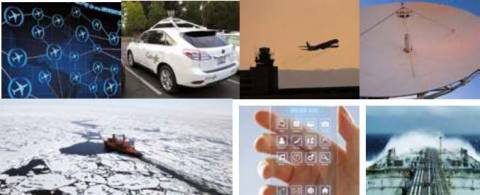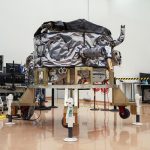A range of new technologies for indoor positioning and navigation were unveiled at the International Navigation Conference (INC) 2015 held this week (February 24–26) in Manchester, England.
Organized by the Royal Institute of Navigation (RIN), the premier event in this new conference series focused on GNSS, its strengths and weaknesses.
A range of new technologies for indoor positioning and navigation were unveiled at the International Navigation Conference (INC) 2015 held this week (February 24–26) in Manchester, England.
Organized by the Royal Institute of Navigation (RIN), the premier event in this new conference series focused on GNSS, its strengths and weaknesses.
Navigation used to be simply about getting from A to B, but the commercialization of GNSS systems have made positioning and location data much more than this — offering a level of reliability and accuracy, and made the data available to anyone wishing to use it. Now, position, navigation and timing (PNT) information from GPS and other GNSS systems underpins many of the services people use every day.
Despite its ubiquity, however, GPS and other GNSS systems do not work well indoors, underground, and underwater. Because signals from GNSS satellites travel huge distances from space, they are very weak once they reach Earth, making them easily blocked by building materials, prone to interference, or susceptible to deliberate jamming. At best, GNSS can be unreliable, and at worst unavailable, indoors.
Roger McKinlay, RIN president, told conference attendees, “As well as being inconvenient, the lack of reliable indoor navigation is a very real problem for emergency services or the military. Imagine a firefighter trying to rescue people from a smoke-filled building.”
Ramsey Faragher, senior research associate at the University of Cambridge Computer Laboratory and an expert on infrastructure-free indoor positioning, says, “The beauty of GPS and one of the reasons that it has been so successfully commercialized is that the infrastructure exists already, and all is needed is an inexpensive receiver to tap into that infrastructure. It’s also free at the point of use.”
“The challenge for indoor navigation technologies,” Faragher continued, “is to develop a highly accurate service that doesn’t require new infrastructure, expert knowledge or large costs. Perhaps unsurprisingly, the technologies that show the most promise use existing signals such as WiFi and hardware like mobile phones, as the technologies unveiled today do, to deduce relative position and provide navigation”.
Adds Professor Terry Moore, director of the Nottingham Geospatial Institute, "Almost every inch of our outdoor space is mapped out, yet our indoor spaces remain fairly unchartered territory. The lack of reliable GPS indoors makes it difficult to achieve accurate position, location and timing.
However, as people increasingly expect information and services on demand, wherever they are, the demand for indoor navigation is booming. A host of new navigation technologies are being developed to help people find their way around facilities such as hospitals, shopping malls, and universities, while developments in indoor positioning promise to aid emergency responders and retailers looking to tailor advertising and entice people into their stores.
“Within the next five to ten years,” Moore predicts, “our indoor spaces are set to become much more intelligent, shedding light on our behavior and responding to us in a way that will make our lives easier."






